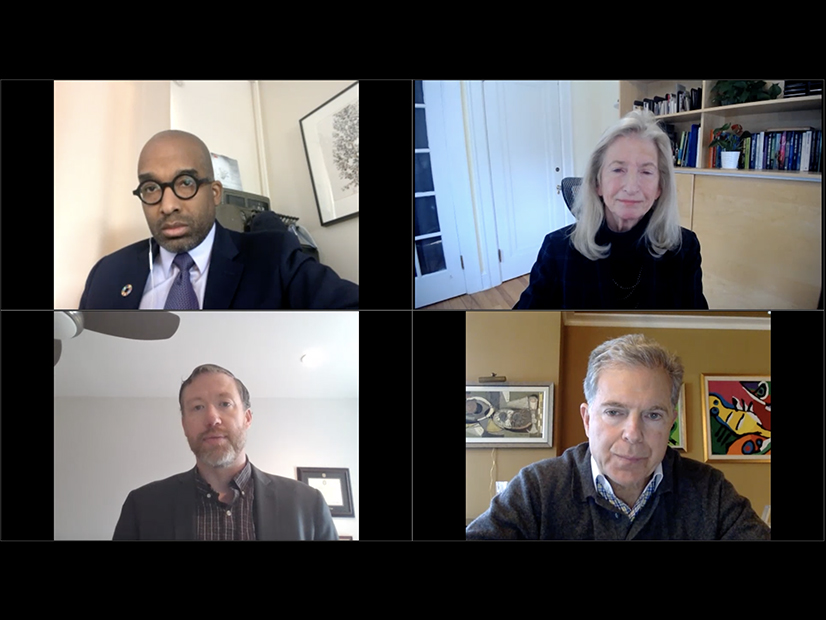
The nation’s regulated electric utilities are an obstacle to the growth of home and community solar and will be an obstacle to the Biden administration achieving decarbonization of the nation’s electrical grid by 2035, a major solar developer charged Wednesday.
“I think you’ve got the 20th century playing against the 21st century, quite frankly,” Jeff Weiss, executive chairman of the D.C.-based Distributed Sun, said during a webinar produced by OurEnergyPolicy. It was the launch of a broadside attack on utilities about three-quarters into the hourlong discussion, which was focused on distributed generation and its developing role on the grid.
“I think the utilities are playing a stacked deck of cards because of the way the regulatory system works in most states, Weiss said. “In most states the public service commissions do what the utilities ask them to do. That’s a bad game. It’s not going to help the environment. It’s not going to help environmental justice. It’s not going to build renewable energy. It’s going to slow everything.
“I think that they, writ large, hire a well known advisory services firm … called ‘Stall Hinder & Delay.’”
That utilities may be reluctant to completely transform the nation’s generation and distribution system in less than 15 years is not a revelation. The Edison Electric Institute, a trade group for the industry, pointed out how extraordinarily difficult such a change would be as early as a year ago. (See EEI: Net Zero by 2035 ‘Incredibly Difficult’.)
The straight-from-the shoulder assessment from Weiss came in response to more gentle discussion that began with a comment from Marilyn Brown, interim chair of the School of Public Policy at the Georgia Institute of Technology, on the problem of low-income households not being able afford the cost of home solar.
Discussion moderator Michael Dorsey, a partner with IberSun North America in Michigan, responded, “I’m glad you flagged … some of the dissonance in some approaches with utilities with respect to distributed energy resources. Where do you see this dissonance between [distributed energy] managers playing out?”
Brown said the problem “is all about return on investment when it’s an investor-owned utility,” and added that utilities in vertically integrated markets “have to have a business case for getting engaged and supporting this effort.”
“It’s got to be clear and profitable, or at least neutral, if others are going to take the business and run with it. So I’m very sympathetic to this problem of incentives. I don’t have an answer,” she said.
Looking to delve deeper into the problem, Dorsey asked for a comment from Weiss and from a fourth participant, Garrett Nilsen, acting director of the U.S. Department of Energy’s Solar Energy Technologies Office.
“Does the business case trump the overhang of the climate catastrophe?” asked Dorsey. “We wouldn’t want to have only a business outlook and forget about this other existential crisis.”
Nilsen said he would not weigh in on either side of the argument, except to say that the problem is “one of lots of headaches.”
“These are not going to be easy conversations, given the number of parties that are impacted, the number of interests that are entrenched and the number of new interests that want to be playing in the game,” he said.
“It’s not something that’s going to be solved this year or next year, maybe by 2030,” he added. “What’s great is that now we can move to a point from having emotional conversations to trying to figure out how do we dig into the actual data? What does the data tell us about how this works?”
One forecast to which the panelists agreed is that solar will continue to be added to the grid and that the cost of solar technologies will continue to fall.

